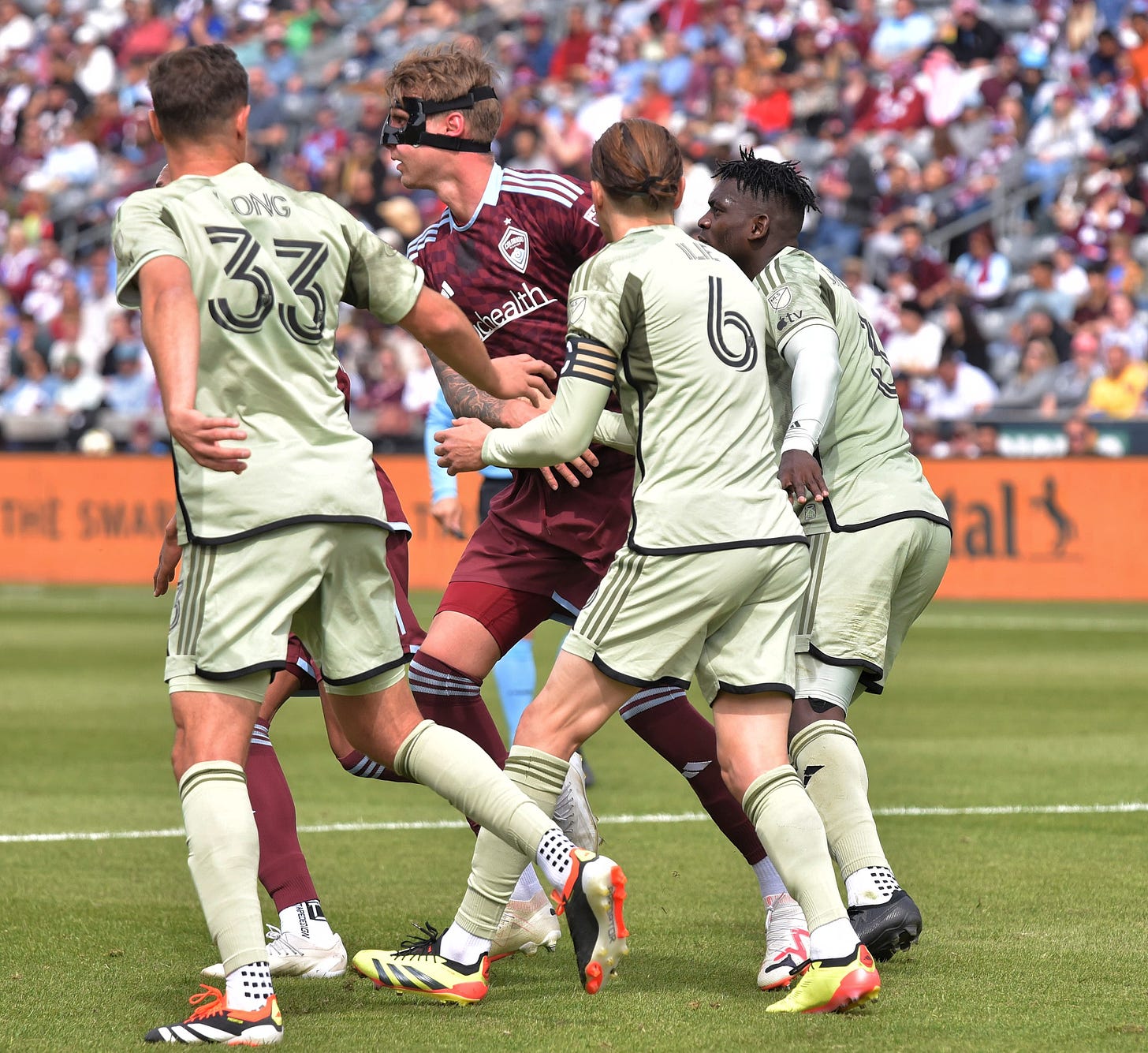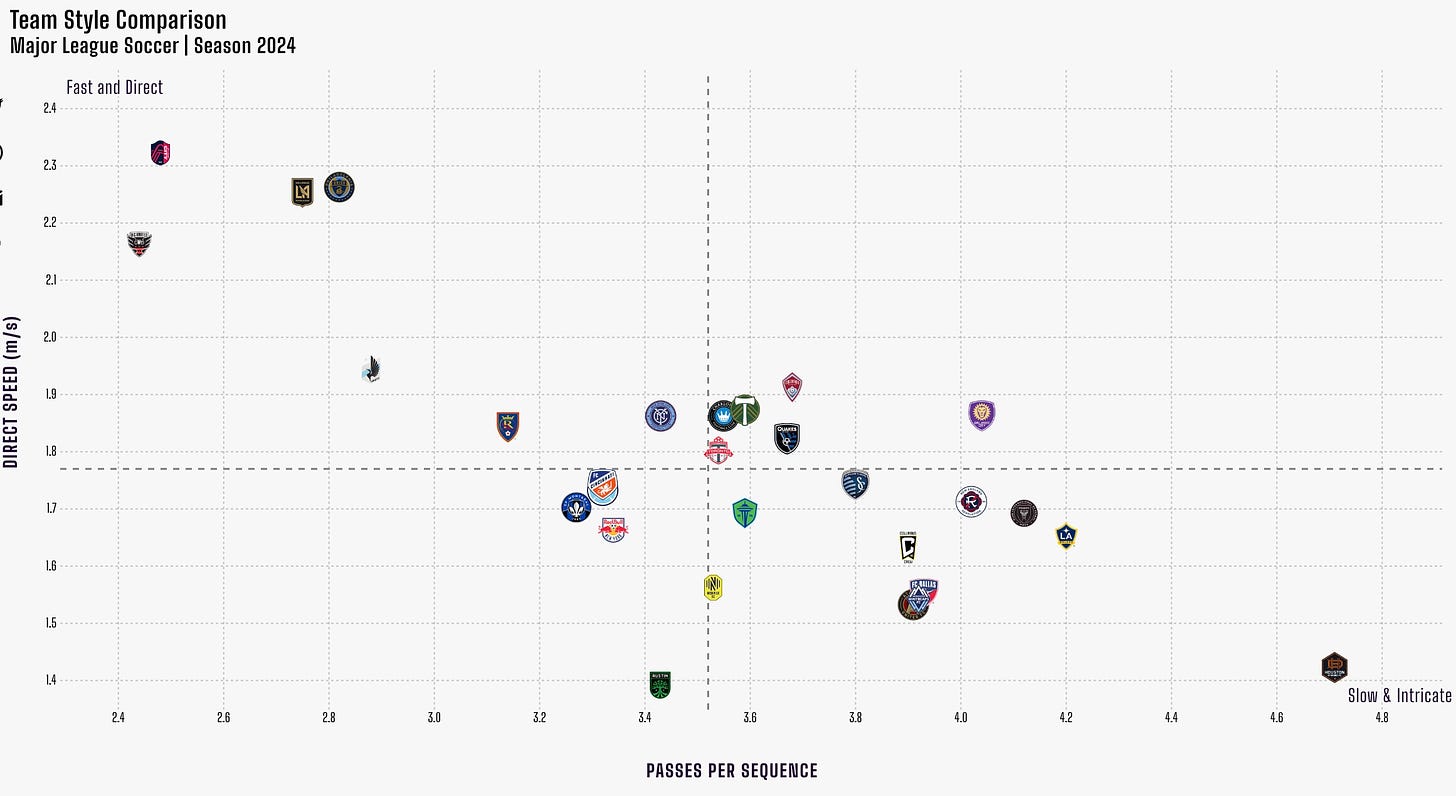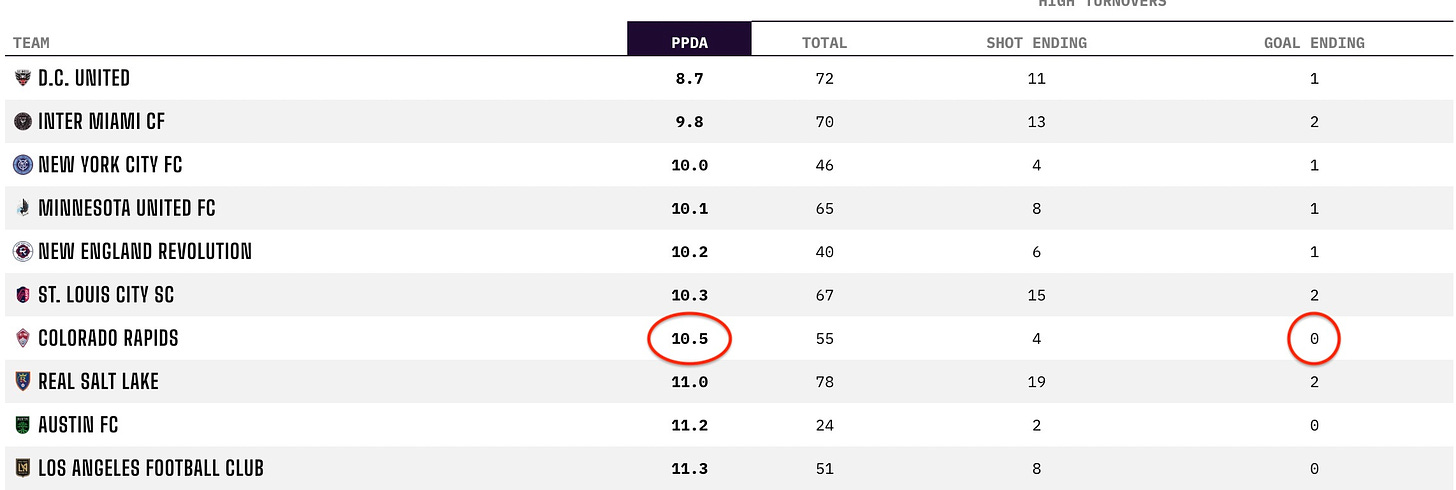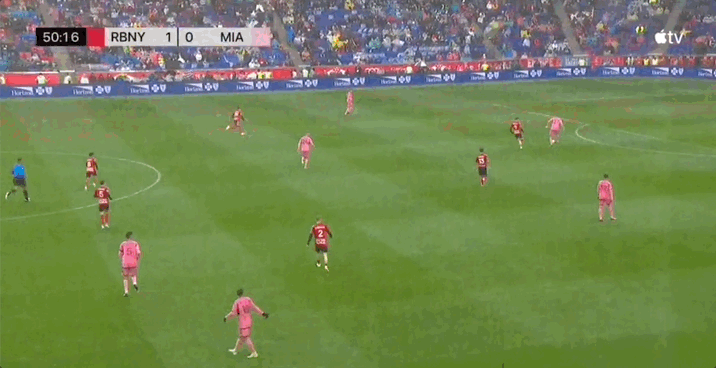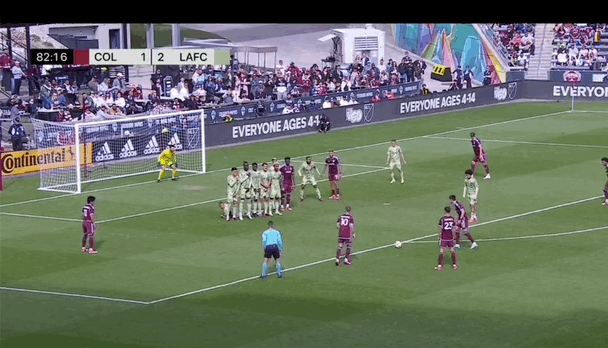Backpass: The Pleasant Surprises
Our Rapids put together 7 points from their last 4 games - games we didn't expect to win. They've also put together a tactical approach that not all of us saw coming. Who are these guys?
Going into the season, there were several assumptions we (me, Matt Pollard, informed Rapids fans, most pundits) made about these Colorado Rapids. First, we assumed that, based on the hiring of former New York Red Bulls gaffer Chris Armas, Colorado would tend to use a high-press on their opponents their opponents, especially after a Rapids loss of possession in the final third. This type of counter-press is known to the soccer hipster set as the ‘gegenpresse’, and it was made famous by former Borussia Dortmund manager Jürgen Klopp.
Second, we assumed the Rapids would struggle to start 2024, considering the season began with matches arch-rivals RSL away, followed by matches against Western Conference juggernauts Seattle Sounders and LAFC, and then a match against Lionel Messi and Inter Miami. I thought roughly 5 points after 7 matches seemed reasonable for the outmatched boys from Commerce City.
Third, after Padraig Smith’s commitment in 2017 to the ‘Rapids Way’, a stated effort to acquire high-IQ, offense-minded players, and after an investment in DP striker Rafael Navarro, that Colorado would become more of an attacking team. Or at least, less of grind-it-out defensive team.
Six games into 2024, we are starting to see some patterns emerge, and we are getting (barely) a large enough sample size of stats to tell us a little about who this team is.
So, what kind of team are the Rapids? Here’s nine bullet points that shed a little light on this team.
It’s not exactly the RBNY gegenpressing team we thought we’d see. The Rapids have yet to score a goal from a high-press-and-turnover situation. The Rapids do indeed like to high press: they have produced 10.5 Passes Per Defensive Action; 7th-fewest in MLS, indicating that they like to take the ball from their opponent in their end and make a few quick passes in order to produce a shot. But they aren’t an ‘all-press, all the time’ team (at least, not top five in the league) and more importantly, they haven’t used that so far to generate offense. More on that later.
They are not a ‘come at me bro’ dribble-attack team: Colorado ranks 26th out of 29 teams in Take-ons, with just 2 in 2024 (LAFC leads with 16). The team’s leader in take-ons is Rafael Navarro with 18 dribbles (9 successful). However, the team only have 2 dribbles that led to a Shot Creating Action – out of 130 SCAs. Both were by Cole Bassett. By comparison, Inter Miami have had 7 dribbles that lead to SCAs; LAFC have had 16; Portland have had 8. They like to pass into the 18-yard box, rather than take it in on foot.
They are defensively organized, conceding just 54 shots to opponents so far; 4th-best in MLS. That also puts them 3rd in MLS in non-penalty Expected Goals Allowed.
They score a lot from set pieces. Of their 8 goals this season, 4 have come from set pieces. That’s tied for the most in MLS along with San Jose and Philadelphia.
Colorado have zero counter-attacking goals so far. To be fair, so do 19 other teams in MLS; we need more games for this stat to mean much. Still: this could be an area for improvement.
The Rapids attack down the wings more than the average MLS team. The Rapids have attacked through the middle of the field just 23% of the time this season, which puts them 24th in the league (Montreal, Miami, and NYRB go up the gut the most.) The Rapids slightly favor the right side over the left, coming down that side 41% of the time (they come down the left 37% of the time.)1
Colorado tend towards crosses from wide positions – they average 20 crosses per game, 8th-most in MLS. If your team has Sam Vines and Keegan Rosenberry, this is probably a good idea.
Zack Steffen has dramatically underperformed. His xG-GA is -2.7; worst among all 29 starting MLS keepers. Sample size for GKs matters a bunch, and the sample size is still small. Still - this is a worrisome trend.
The Rapids are 12th in MLS in Fouls per game with 13.8 pg. It’s not Rapids thug life anymore, kids.2 However, Rafael Navarro leads the league in fouls with 16.3
There are lots ‘styles’ in soccer, although every team will exploit a specific scoring opportunity even if it isn’t their ‘style’ in a given moment. A few of the basic ‘styles’ of play include: high-pressing, counter-pressing, possession, route-one (long-passing), short-passing, defensive, and bunker-and-counter.
Overall, the Rapids are getting it done in a fairly balanced, slightly defense-minded 4-2-3-1 that favors width and crosses. They counter-press, but they aren’t among the top three high-pressing teams in the league (that’d be DC, Miami, and NYCFC.) They aren’t a possession-based team or a quick-counter team, but rather a balanced possession team – they have 50.1% possession so far. They aren’t a long-ball or short-pass dominant team; they’re 21st in long balls per game and 16th in the league in short passes per game – AKA pretty darn average. The number of passes in a possession is also … quite average. A site called Opta Analyst has a great visual on this.
The Rapids have shown different abilities and looks this season. They have a variety of weapons. They haven’t scored from their strikers. Maybe they’ll start emphasizing one style over another as the season continues. But right now, they’re playing Swiss Army knife football: they can do a little of everything pretty well. They could use some improvement, though, at the top and the bottom of the starting XI pyramid: neither GK Zack Steffen and striker Rafael Navarro have been lighting the world on fire to date.
Press Your Luck?
The original idea for this article was to discuss the Rapids lack of success turning counter-pressing into goals - an idea I basically stole from Matt Doyle, who did a fantastic job last week breaking down NYRB’s move away from being a pressing team using a stat called PPDA - Passes Per Defensive Action. As mentioned earlier, Colorado has produced 10.5 PPDA; 7th-fewest in MLS. However, their high press defense hasn’t produced any goals yet.
There is an advantage to high-pressing teams in their own end without turning it into goals. By forcing opponents into turnovers and simply applying pressure, you force them to kick long balls that have a lower chance of connecting. You also dictate the pace and the terms of the game to your opponent.
However, high pressing is risky. If you commit more players to the press, you have fewer back and deep to defend if the opponent breaks the press. It would also be good to score on these high-press turnovers, but as indicated, the Rapids haven’t yet. This is something they should work on.
I watched two weeks of goals in MLS – there’s a great Apple TV highlight reel each week of just goals. This past week, zero goals happened off a high-press turnover. In Match week 6, there was only one. It was, ironically the team that Doyle had said had gone beyond high pressing for goals: the New York Red Bulls. This goal below was number two in their 4-0 beat-down of Messi-less Miami.
What I see here is four players doing the job: two are pressing the ball, one is jumping into a passing lane, and one is floating looking to do something if an attack develops. That ‘floater’, Dante Vanzeir, ends up with the ball in a deadly area. He takes a dribble and passes it off to Lewis Morgan, who pounds it home.
This is something Colorado needs to work on: both having players press effectively AND having the chess pieces arranged on the board to strike when the turnover happens. Do I sound like a naive middle aged man who doesn’t know what the coaches are preaching in the chalk sessions before training? Absolutely. But I also know that producing a counter-press that gets goals will be key to the Rapids succeeding this season, and they have to keep adjusting their approach to the high press until it BOTH makes their opponent uncomfortable AND results in game-changing goals.
And Finally, your moment of Zen…
I mean how great was this?
That all adds up to 101%. Because… rounding?
The Rapids from 2005-2016 had a reputation for physical, aggressive play. Note that DM Pablo Mastroeni played for the Rapids from 2002 to 2013 … and coached them from 2014 to 2017.
All stats care of whoscored.com, fbref.com, and theanalyst.com.



